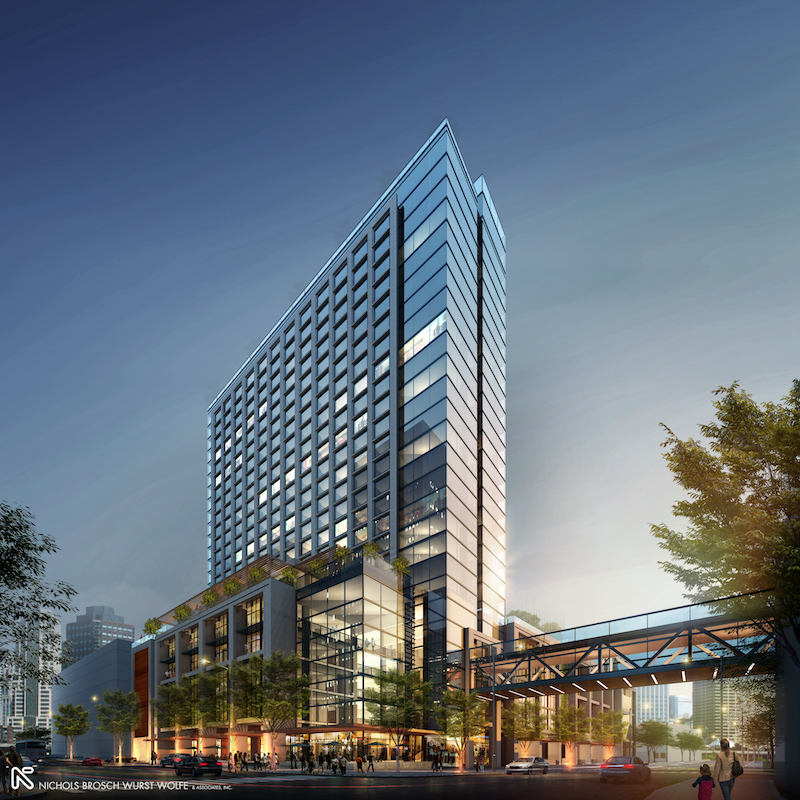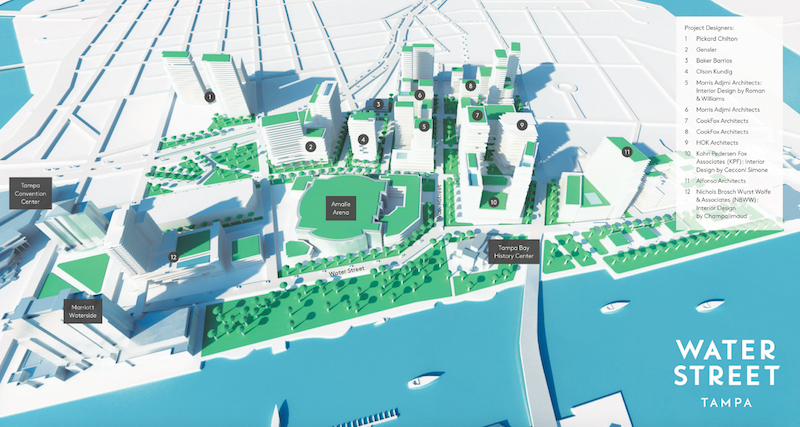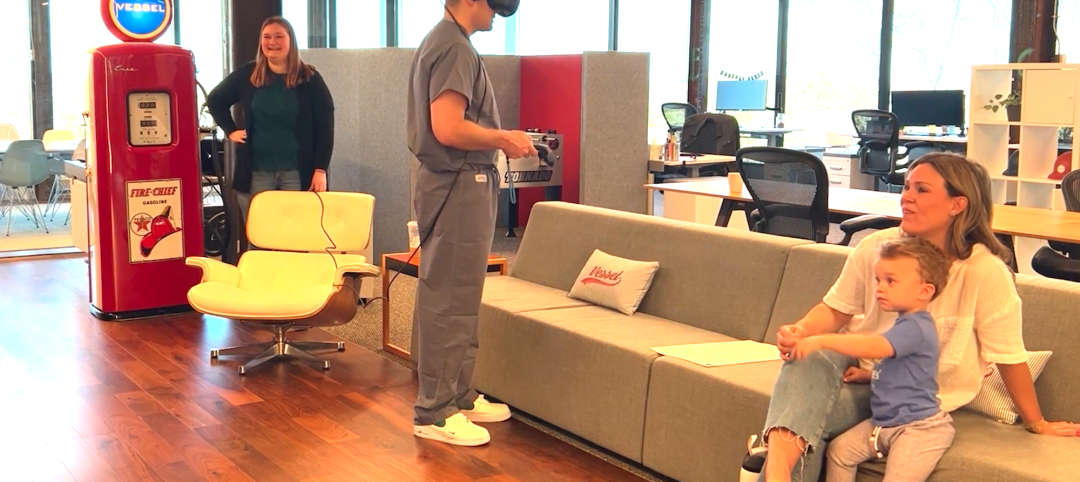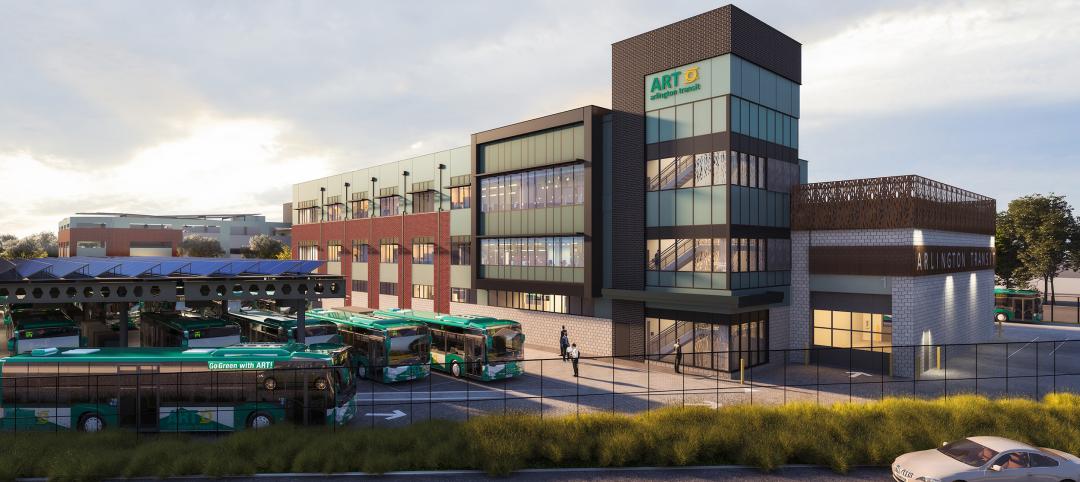Earlier this summer, the installation of more than $200 million in infrastructure, including new roadways and utilities, began in support of Water Street Tampa, a mixed-use neighborhood on 50 waterfront acres in this South Florida metro that, when completed in 2027, will include more than 9 million sf of residential, commercial, entertainment, cultural, and retail space.
Being built on what once were surface parking lots and industrial buildings, the $3 billion Water Street Tampa project is the vision of Strategic Property Partners (SPP), a development joint venture between Cascade Investment, which is controlled by Microsoft’s cofounder Bill Gates; and Jeff Vinik, who owns the Tampa Bay Lightning NHL franchise and the Tampa Bay Storm arena football team, and is a minority owner of the Boston Red Sox.
Gates and Vinik are the latest billionaire-entrepreneurs—others include Under Armour’s Kevin Plank in Baltimore and Quicken Loans’ Dan Gilbert in Detroit and Cleveland—to invest heavily in urban redevelopment and construction to reinvigorate economically challenged downtown areas.
“This is a city early in its growth,” Vinik said about Tampa during an interview last fall with Forbes magazine. “It’s a process, and we’re in the beginning to middle stages of that process. As someone who’s an investor, I look for potential and this has every bit of the raw materials to be a great place.”
Vinik added that Tampa benefits from its proximity to Latin America and from tourism in general.
If nothing else, Water Street Tampa is ambitious: it will include 18 buildings with 3,500 residences (which would double the current number downtown), 650-plus guest rooms in two hotels, 2 million sf of office space (the first to be built in downtown Tampa in 25 years), and 1 million sf of retail, cultural, educational, and entertainment space.
The project, which is expected to bring 23,000 workers and residents to this community, will offer 12.9 acres of green space. Water Street Tampa will be the first community certified under the WELL Community Standard being developed by the International Well Building Institute.
The first vertical phase of this project—with over 4 million sf of office, residential, hospitality, retail, and cultural, over 10 city blocks—will begin later this year and is scheduled for completion by 2020.
To view a video of how this project will develop and build out, click here.
SPP also donated an acre of land to the University of South Florida, which plans to relocate its Morsani College of Medicine and Heart Institute to an HOK-designed 300,000-sf facility in downtown Tampa. That construction is underway, and the new college should be ready for the fall semester in 2019.
 The Coral Gables, Fla.-based architectural firm Nichols Brosch Wurst Wolfe & Associates is the designer of a 500-key hotel that will be part of Water Street Tampa. Image: Strategic Property Partners.
The Coral Gables, Fla.-based architectural firm Nichols Brosch Wurst Wolfe & Associates is the designer of a 500-key hotel that will be part of Water Street Tampa. Image: Strategic Property Partners.
Water Street Tampa stands out for the sheer number of AEC firms that is involved in different aspects of this project.
They include nine national and local architectural firms: CookFox Architects (an office and residential over retail), Morris Adjmi Architects (a 157-key five-star hotel, condos, apartments, and retail), Olson Kundig (office over retail), Kohn Pedersen Fox Associates (condos and apartments over a grocery story and retail), Gensler (two offices over retail), Alfonso Architects (the redevelopment of the site near Garrison Channel and Hillsborough Bay, residential and waterfront retail, and a new public park on the Riverwalk), Nichols Brosch Wurst Wolfe & Associates (a 500-key four-star hotel), Pickard Chilton (three office and residential buildings over retail), and Baker Barrios (one building, and the community’s district-wide cooling system and infrastructure).
The developer is working with three interior design firms: Roman & Williams, Cecconi Simone, and Champallmaud. And in the predevelopment phase, it signed on with a host of general contractors: Kimmins, Creative, Skanska, Kast, Suffolk, Coastal, Holder, Gilbane, and Moss.
“We wanted to use a large, diverse group [of AEC firms] that would design and build unique buildings,” explains Bryan Moll, SPP’s Executive Vice President of Development, in an interview with BD+C. He points out that there will be collaboration among the AEC firms. And he expects several of the GCs to be involved in the project’s different construction phases.
Moll notes that the infrastructure under construction is replacing “a bunch of thoroughfares connecting a highway” with a more-walkable grid of streets that links the downtown more seamlessly with the rest of the city.
Tampa’s Amalie Arena, where the Lightning play, is located within the Water Street Tampa district, which is also near the Florida Aquarium and the city’s convention center. Moll says there’s a possibility that this project could include an entertainment district.
As a waterfront property, resilience is key, especially in light of recent storms that wracked Texas and Louisiana. The design and construction of Water Street Tampa address the likelihood of rising sea levels and future severe weather events.
Moll says the entire site is being built at least 11 feet above current sea level, and most of the buildings will be on an even higher plain, between 15 and 25 feet above sea level. Critical infrastructure and mechanicals will be located at higher elevations, too, he adds.
The city of Tampa and Hillsborough County are financing part of the infrastructure installation.
Related Stories
Industrial Facilities | Jun 20, 2023
A new study presses for measuring embodied carbon in industrial buildings
The embodied carbon (EC) intensity in core and shell industrial buildings in the U.S. averages 23.0 kilograms per sf, according to a recent analysis of 26 whole building life-cycle assessments. That means a 300,000-sf warehouse would emit 6,890 megatons of carbon over its lifespan, or the equivalent of the carbon emitted by 1,530 gas-powered cars driven for one year. Those sobering estimates come from a new benchmark study, “Embodied Carbon U.S. Industrial Real Estate.”
Virtual Reality | Jun 16, 2023
Can a VR-enabled AEC Firm transform building projects?
With the aid of virtual reality and 3D visualization technologies, designers, consultants, and their clients can envision a place as though the project were in a later stage.
Mechanical Systems | Jun 16, 2023
Cogeneration: An efficient, reliable, sustainable alternative to traditional power generation
Cogeneration is more efficient than traditional power generation, reduces carbon emissions, has high returns on the initial investment, improves reliability, and offers a platform for additional renewable resources and energy storage for a facility. But what is cogeneration? And is it suitable for all facilities?
Office Buildings | Jun 15, 2023
An office building near DFW Airport is now home to two Alphabet companies
A five-minute drive from the Dallas-Fort Worth International Airport, the recently built 2999 Olympus is now home to two Alphabet companies: Verily, a life sciences business, and Wing, a drone delivery company. Verily and Wing occupy the top floor (32,000 sf and 4,000 sf, respectively) of the 10-story building, located in the lakeside, work-life-play development of Cypress Waters.
Transit Facilities | Jun 15, 2023
Arlington, Va., transit station will support zero emissions bus fleet
Arlington (Va.) Transit’s new operations and maintenance facility will support a transition of their current bus fleet to Zero Emissions Buses (ZEBs). The facility will reflect a modern industrial design with operational layouts to embrace a functional aesthetic. Intuitive entry points and wayfinding will include biophilic accents.
Urban Planning | Jun 15, 2023
Arizona limits housing projects in Phoenix area over groundwater supply concerns
Arizona will no longer grant certifications for new residential developments in Phoenix, it’s largest city, due to concerns over groundwater supply. The announcement indicates that the Phoenix area, currently the nation’s fastest-growing region in terms of population growth, will not be able to sustain its rapid growth because of limited freshwater resources.
Multifamily Housing | Jun 15, 2023
Alliance of Pittsburgh building owners slashes carbon emissions by 45%
The Pittsburgh 2030 District, an alliance of property owners in the Pittsburgh area, says that it has reduced carbon emissions by 44.8% below baseline. Begun in 2012 under the guidance of the Green Building Alliance (GBA), the Pittsburgh 2030 District encompasses more than 86 million sf of space within 556 buildings.
Industry Research | Jun 15, 2023
Exurbs and emerging suburbs having fastest population growth, says Cushman & Wakefield
Recently released county and metro-level population growth data by the U.S. Census Bureau shows that the fastest growing areas are found in exurbs and emerging suburbs.
Healthcare Facilities | Jun 14, 2023
Design considerations for behavioral health patients
The surrounding environment plays a huge role in the mental state of the occupants of a space, especially behavioral health patients whose perception of safety can be heightened. When patients do not feel comfortable in a space, the relationships between patients and therapists are negatively affected.
Engineers | Jun 14, 2023
The high cost of low maintenance
Walter P Moore’s Javier Balma, PhD, PE, SE, and Webb Wright, PE, identify the primary causes of engineering failures, define proactive versus reactive maintenance, recognize the reasons for deferred maintenance, and identify the financial and safety risks related to deferred maintenance.

















